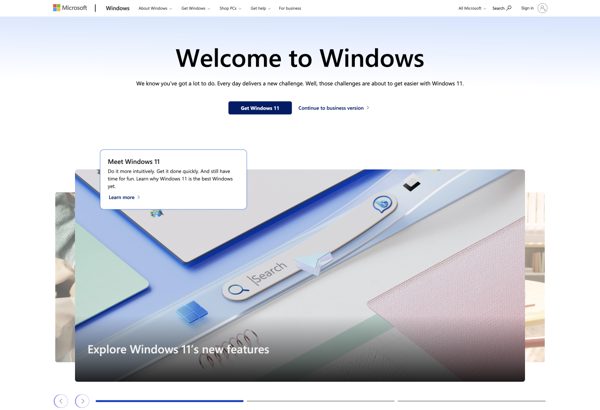EComStation

eComStation: Legacy Business OS with Compatibility
eComStation operates on OS/2 Warp, providing compatibility and support for legacy business applications, along with updated device drivers and an improved graphical user interface.
What is EComStation?
eComStation is an operating system first released in 2001 that is based on IBM's OS/2 Warp. It is designed to maintain compatibility and provide ongoing support for legacy business applications that were originally written for the OS/2 platform.
A key goal of eComStation is preserving investment in OS/2 software. Many large organizations still rely on custom OS/2 programs for critical business functions like accounting, manufacturing, and inventory management. eComStation allows them to continue using this software while taking advantage of more modern hardware.
On the technical side, eComStation includes updated device drivers that allow it to work with newer components like printers, graphics cards, and networking hardware. It also includes an improved Workplace Shell GUI for better usability. Another selling point is its security and stability compared to modern operating systems.
The target market for eComStation is enterprise customers that need to keep legacy OS/2 applications running. It likely does not offer much value for general home or business use. But for organizations relying on old OS/2 software, eComStation can save them from very costly replacements or migrations.
EComStation Features
Features
- Provides a desktop environment similar to classic OS/2
- Supports legacy OS/2 business applications
- Includes updated device drivers
- Improved graphical user interface over OS/2 Warp
- Supports modern hardware
Pricing
- One-time Purchase
Pros
Cons
Official Links
Reviews & Ratings
Login to ReviewThe Best EComStation Alternatives
Top Os & Utilities and Legacy Operating Systems and other similar apps like EComStation
Here are some alternatives to EComStation:
Suggest an alternative ❐Windows 10

Ubuntu

MacOS

Linux Mint

Windows 7

Arch Linux

Elementary OS

Debian

Fedora

Manjaro Linux

OpenSUSE

Kubuntu

Plop Linux
